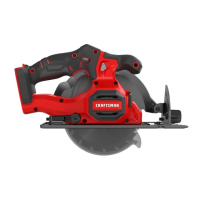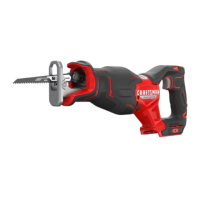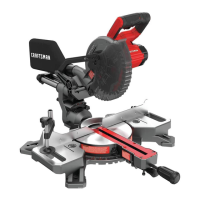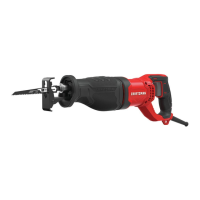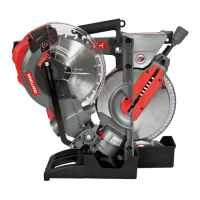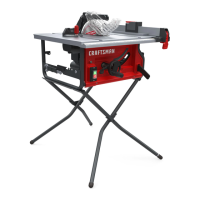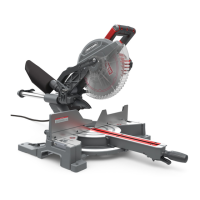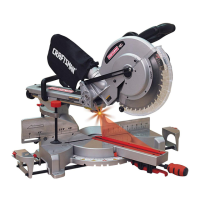11
ENGLISH
Lubrication
WARNING: NEVER spray or in any other way apply
lubricants or cleaning solvents inside the tool. This can
seriously affect the life and performance of the tool
and may result in personalinjury.
CRAFTSMAN tools are properly lubricated at the factory and
are ready for use. However, it is recommended that, once a
year, you take or send the tool to a certified service center
for a thorough cleaning andinspection.
Fig.S
30
L-Cuts
An L-cut is a section that is removed from a piece of tile
and is used when cutting a piece of tile to fit in a corner of a
cabinet or piece of trimmolding.
1. Outline the area to be cut on both sides of thetile.
2. Align the tile to the cutting cart fence and make the cut
far enough into the tile withoutovercutting.
3. Make a cut on the other mark on the tile
withoutovercutting.
4. Turn the tile over and make the cut along one of the
outlines, but this time an overcut can occur without
damaging the exposed surface of the tile due to the
radius of the blade. Overcut the other line and the cut
piece should be separate from the rest of thetile.
5. Turn off thesaw.
Adjustments (Fig. A, S)
The cutting cart fence and rails are properly aligned from
the factory. Shipping or prolonged use can cause them to
become misaligned and needadjustment.
Squaring the Cutting Cart Fence to
the Blade
1. Lay a 90º square flat on the blade surface with one end
against the cutting cart fence
7
.
2. If the blade is not 90º to the cart fence, the rail will
needadjustment.
3. Loosen the cart fence adjustmentscrew.
4. Adjust the fence until it is square to theblade.
5. Tighten the cart fence adjustmentscrew.
Adjusting the Cutting Cart Parallel to
the Blade
1. Lay a 90º square flat on the blade surface with one end
against the cutting cart fence
7
.
2. If the blade is not 90º to the cutting cart fence, the rail
will needadjustment.
3. Loosen the three front and rear screws on the left guide
rail, and adjust rail until it is parallel to theblade.
4. Move the rail until the cutting cart fence is square to
theblade.
5. Tighten the three railscrews.
1. Turn off and remove battery from the saw.
2. Place a 5 gallon (19 liters) bucket under the drain plug.
Remove the drain plug by loosening the attached wing
nut and allow the water to empty into the bucket.
3. Slide the cutting cart off the rail system. Spray the
cutting cart with a hose or wipe with a grout sponge
or rag.
4. Wipe the rails with a grout sponge or a rag. Spray
lubricants are not required on the guide rail or wheels.
5. Clean the water reservoir by wiping with a
groutsponge.
WARNING: Do not spray with water. Some water
may reach the motor area.
Use only mild soap and a damp cloth to clean the tool.
Many household cleaners contain chemicals which
could seriously damage plastic. Also, do not use gasoline,
turpentine, lacquer or paint thinner, dry cleaning fluids or
similar products. Try not to let any liquid get inside the tool;
never immerse any part of the tool into a liquid.
Cleaning
WARNING: Blow dirt and dust out of all air vents with
clean, dry air at least once a week. To minimize the risk
of eye injury, always wear ANSI Z87.1 approved eye
protection when performingthisprocedure.
WARNING: Never use solvents or other harsh
chemicals for cleaning the non-metallic parts of
the tool. These chemicals may weaken the plastic
materials used in these parts. Use a cloth dampened
only with water and mild soap. Never let any liquid
get inside the tool; never immerse any part of the tool
into aliquid.
MAINTENANCE
WARNING: To reduce the risk of serious personal
injury, turn unit off and remove the battery pack
before making any adjustments or removing/
installing attachments or accessories. An
accidental start-up can causeinjury. Make sure the
switch is in the OFF position.
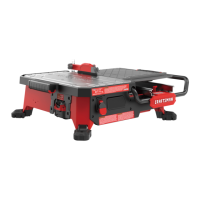
